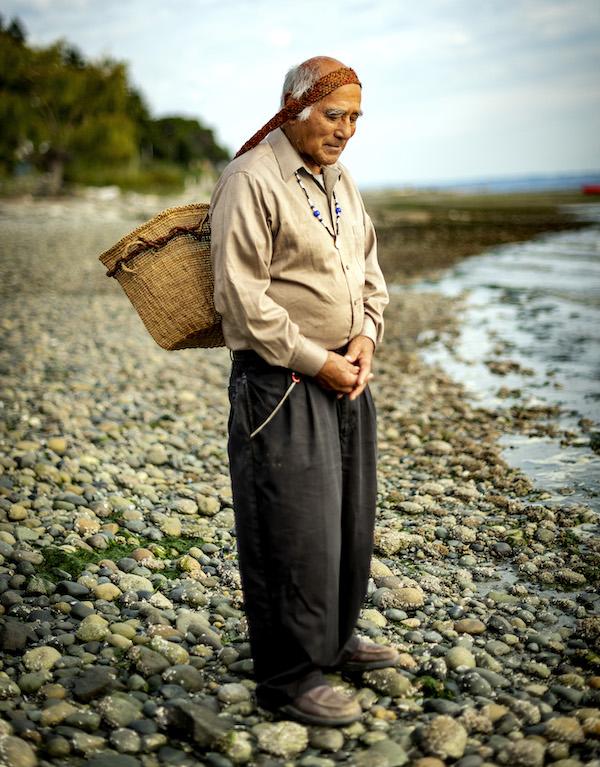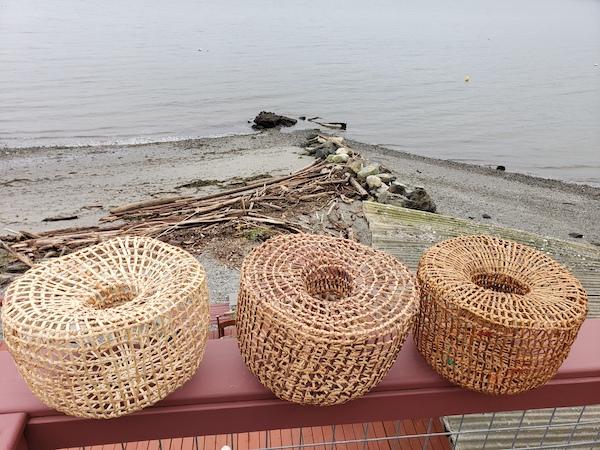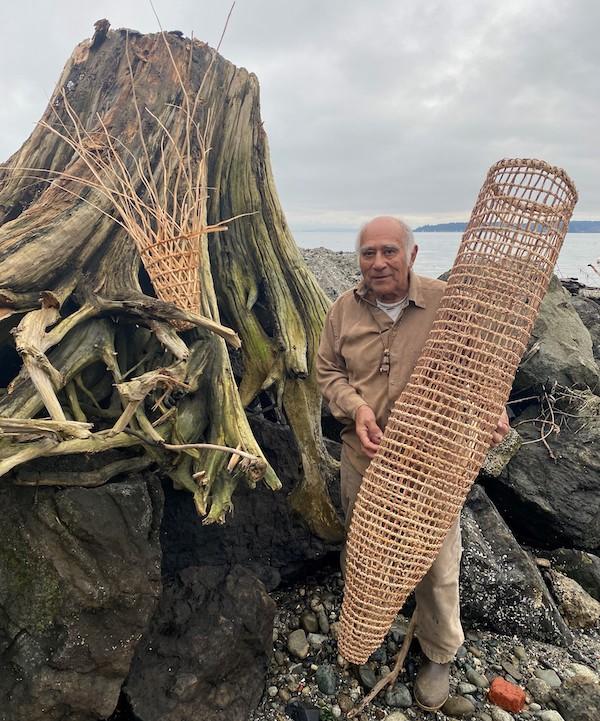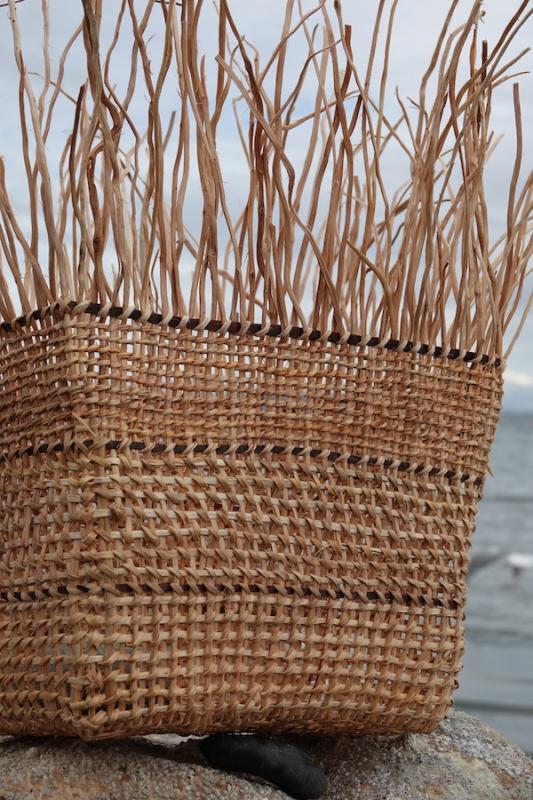Ed Eugene Carriere (Suquamish)

Photo by Stuart Isett
Bio
Ed Eugene Carriere (Suquamish) learned the art of basketmaking from his great-grandmother, Julia Jacob of the Suquamish Tribe, who raised him from infancy. Jacob, born in 1874, was raised in a cedar plank longhouse called Old Man House, until she was a teenager, learning the early traditions of basketry; then her family was moved to their Indian allotment across the bay where Carriere currently lives. At age 14, he started to learn old-style split cedar limb and root Salish basketry and what became his lifetime specialty, clam baskets. Estimating from sales records, Carriere has likely made more than 600 clam baskets so far in his lifetime.
Carriere’s goal always was to learn basketry styles from as many generations back as he could. Through his tribal elders and museum collections, he was able to learn from five generations back. He then visited the 700-year-old Qwu?gwes archaeological waterlogged/wet site to help excavate preserved ancient clam baskets that are very similar to the ones he makes. Carriere literally was able to learn from his 30th and earlier generation grandparents, something he never dreamed could be possible.
Carriere helped to analyze a 2,000-year-old basketry collection from a Coast Salish wet site near Snoqualmie, east of Seattle, which provided inspiration for him to replicate baskets from his 100th grandparent’s work. After making several beautiful replicas, he went to the University of British Columbia Museum of Anthropology to observe even earlier ancient Coast Salish wet site basketry, dating from 2,000, 3,000, and 4,500 years ago—fully 225+ generations back in Carriere’s Salish Sea traditions. Carriere decided to make a “book” by putting all these slightly different ancient styles of weave into one pack basket. He calls it an Archaeology Basket since it has “layers” of weaves from the different time periods.
Ed Carriere and archaeologist Dale Croes co-produced the book Re-Awakening Ancient Salish Sea Basketry, Fifty Years of Basketry Studies in Culture and Science (2018) where they detailed each step in replicating ancient Salish basketry, and, through Croes’ statistical tests, showed how the ancient basketry styles link to his great-grandmother’s teachings; they call their approach “generationally linked archaeology.”
Carriere now presents his baskets for all future generations to learn from the deep-rooted cultural and arts heritage of the Salish Sea and peoples. In July 2022, Carriere was awarded the Community Spirit Award by the First Peoples Fund, honoring artists who embody their People's cultural assets in their creations and their way of life. In February 2023, Carriere and Croes were awarded the Society for American Archaeology Award for Excellence in Archaeological Analysis, demonstrating a synergy of culture and science produces more than either one does separately.
—By Dale R. Croes, PhD, Wet Site Archaeologist, Washington State University

Carriere’s shrimp trap baskets made of split cedar limbs and roots. Photo by Dale Croes

Carriere holds a finished salmon fish trap basket and displays another that he has started. Photo by Dale Croes

Carriere’s Archaeology Basketunder construction for the New York American Museum of Natural History remodeled Northwest Coast Hall. Ed made layers of weaves with the bottom rows a 4,500-year old style, middle rows 3,000-years old, and top 2,000-year old Salish Sea ancient weaves. The next rows will be the last 1,000 years in his traditional territory. Photo by Dale Croes

